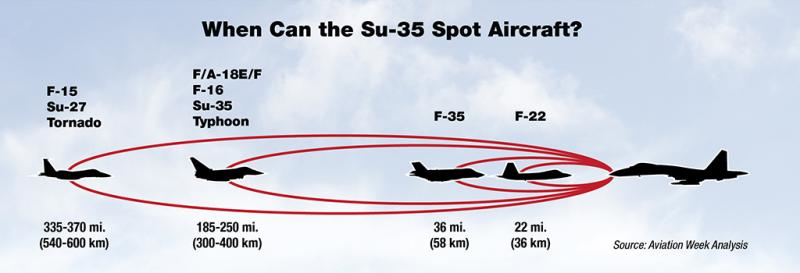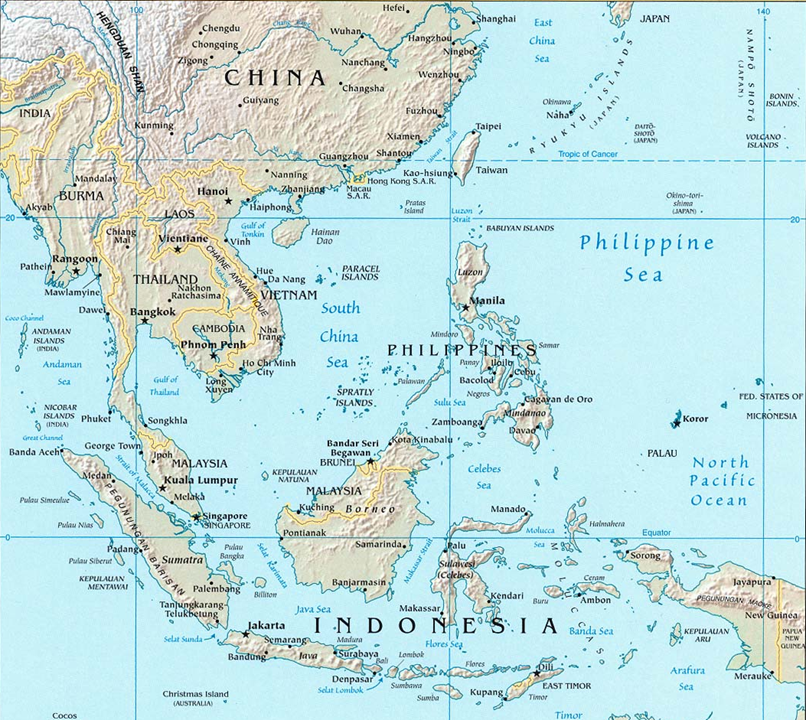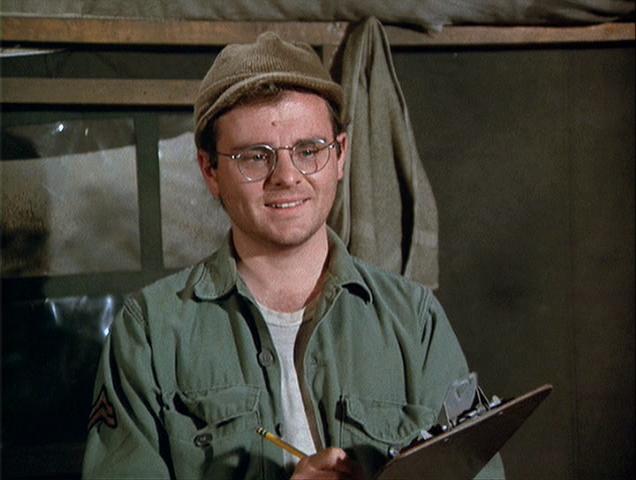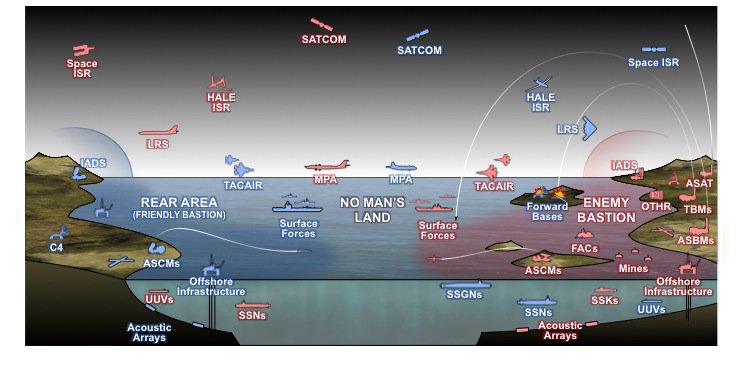
I’ve been reviewing the U.S. armed forces vision for how to fight and win with the F-35. It plays a pretty central role in each services’ vision documents, meaning that they have all adapted to the “top-down” strategic guidance given by the Department of Defense (DOD). But the interesting part is the differences between the services’ documents and statements.
How The Services View Their F-35s
Below are the U.S. armed forces I’ve focused on, and their current and future plans for the F-35. The table is from the FlightGlobal World Air Forces 2017 report.

Given the large numbers of aircraft going to training units, we can see that all forces are building their new pilot numbers, and according to Lt Col Berke (via an Aviation Week interview), they will put new pilots into F-35s, so they simply learn a fifth generation mindset from scratch, rather than having to “un-learn” the fourth generation mindset.
We can also see the U.S. Marine Corps building active combat units, in their relative haste to declare Initial Operational Capability (IOC) in July 2015, and in support of their first F-35B overseas deployment to Iwakuni Airbase, Japan in January 2017. This deployment location is a good way to support both possible confrontation sites in Korea and the East China Sea.

Another viewpoint exists on the U.S. military force posture in Asia that is essentially militaristic. The map image above is from a Forbes article, calling other US media “blind to the militarism of its own mentality and approach, as well as to the essential militarism of the U.S. alliance system in Asia, with its “cornerstone” of U.S. bases, including the headquarters and the Seventh Fleet, and some 100,000 force personnel in Japan and South Korea.” The Marine Corps is apparently quite keen to replace their ageing AV-8B and early model F/A-18A/B/C/D aircraft (as they have skipped out on the Super Hornet F/A-18E/F).
Meanwhile the U.S. Navy has articulated their vision in a document from Naval Air Systems Command (NAVAIR) entitled Naval Aviation Vision 2016-2025. They state:
The supersonic, multi-role, multi-service F-35 Lightning II represents a quantum leap in air superiority capability. Combining the next-generation fighter characteristics of radar-evading stealth, supersonic speed and fighter agility with the most powerful and comprehensive integrated sensor package of any fighter aircraft in history, the F-35 delivers unprecedented lethality and survivability to Naval Aviation [emphasis added].
Their characterization of the F-35 as an instrument of air superiority is perhaps a bit too optimistic, or stretches the F-35 capability a bit too much. In an assessment from the U.S. Naval War College of “Chinese Air Superiority in the Near Seas”, the F-35 does not stand out from the pack of Chinese and American fourth generation fighters, in the same way that the F-22 clearly does:

Indeed, while the U.S. Air Force has big plans for the F-35, it also offers some cautionary words about the force design and balance that the F-22 brings to the fight. According to Chief of U.S. Air Force Air Combat Command Gen. Michael Hostage in a February 2014 interview:
Dealing with the Joint Strike Fighter, Hostage says he is ‘going to fight to the death to protect the F-35’ since the only way to keep up with the adversaries, which ‘are building fleets that will overmatch our legacy fleet’, is by employing a sufficient fleet of 1,763 (‘not one less’) F-35s. You can update and upgrade the F-15 and F-16 fleets, but they would still become obsolete in the next decade. But, the F-22 Raptor will have to support the F-35. And here comes another problem. When the Raptor was produced it was flying ‘with computers that were already so out of date you would not find them in a kid’s game console in somebody’s home gaming system.’ Still, the U.S. Air Force was forced to use the stealth fighter plane as it was, because that was the way the spec was written. But now, the F-22 must be upgraded through a costly service life extension plan and modernization program because, ‘If I do not keep that F-22 fleet viable, the F-35 fleet frankly will be irrelevant. The F-35 is not built as an air superiority platform. It needs the F-22,” says Hostage to Air Force Times.’ [emphasis added].
F-22 + F-35 = Air Superiority

So, is the F-35 a capable air superiority platform, or not? General Hodges in 2014:
[E]xamine [the] Raptor versus the Lightning. A Raptor at 50-plus thousand feet at Mach 2 with its RCS has a different level of invulnerability than a Lightning at 35,000 at Mach .9 and it’s RCS. The altitude, speed, and stealth combined in the two platforms, they give the airplanes two completely different levels of capability. The plan is to normalize the Lightning’s capability relative to the Raptor by marrying it up with six, or seven or eight other Lightening’s. The advanced fusion of the F-35 versus the F-22 means those airplanes have an equal level or better level of invulnerability than the Raptors have, but it takes multiple airplanes to do it because of the synergistic fused attacks of their weapon systems. That’s the magic of the fifth-gen F-35, but it takes numbers of F-35s to get that effect. That’s why I’ve been so strident on getting the full buy. Because if they whittle it down to a little tiny fleet like the Raptor, it’s not going to be compelling.
In a separate interview in 2015, “Re-norming of Airpower in Practice: An F-22 enabled Air Combat Force,” General Hawk Carlisle made the point that
[T]he F-22 was a key enabler for the air combat force currently, and had led to a re-norming of airpower in practice … It’s not just that the F-22s are so good, it’s that they make every other plane better. They change the dynamic with respect to what the other airplanes are able to do because of what they can do with regard to speed, range, and flexibility. It’s their stealth quality. It’s their sensor fusion. It’s their deep penetration capability. It is the situational awareness they provide for the entire fleet which raises the level of the entire combat fleet to make everybody better. The F-22s make the Eagles better, and the A-10s better, and the F-16s better. They make the bombers better. They provide information. They enable the entire fight. And its information dominance, its sensor fusion capability, it’s a situational awareness that they can provide to the entire package which raises the level of our capabilities in the entire fight. This is not about some distant future; it is about the current fight.
This point is nicely illustrated with the kind of cross domain information-sharing capability which embodies “joint-ness” and is demonstrated by F-22’s providing targeting data to submarines (SSGN) for land-attack cruise missiles.
General Carlisle also announced that “[t]he exercise coming up at Langley in December 2015 will feature the F-22 flying with the Typhoon (XI Squadron from the RAF) and the Rafales from the French Air Force. What these three aircraft have in come is that they all are about 10 years old in terms of combat experience and life.”
Perhaps these exercises were engineered to test improvements to the F-22’s combat capabilities, especially Within-Visual-Range (WVR), aptly named since the Mark 1 human eyeball becomes a sensor that stealth cannot fool. In May of 2015, the Raptor fired its first AIM-9X sidewinder, latest generation dogfight missiles. Along with a helmet-mounted sight, this capability was fielded by the Soviet Union in 1984, when the R-73 (AA-11 “Archer”) was mated to the MiG-29 Fulcrum. According to Lt. Col. Fred “Spanky” Clifton, who is one of the most experienced aggressor pilots ever, having flown the F-15, F-5, F-16 and the notorious MiG-29, “[i]n the WVR (within visual range) arena, a skilled MiG-29 pilot can give and Eagle or Viper driver all he/she wants.”
The experience at Red Flag Alaska in 2012, a training exercise which saw the F-22 go up against Typhoons of the German Luftwaffe, was perhaps humbling for the Air Force to some degree, as the German pilots reported they had “Raptor salad for lunch,” and subsequently painted F-22 kills on their aircraft. This may have provided some impetus to deploy better capabilities; this year, Raptor pilots were happy to see the incremental update 3.2, which fielded the AIM-9X capability.
The 9X Block 1 version of the dual-use, infrared missile is “a dramatic leap within visual range missile capabilities,” said Lt. Col. Daniel, an F-22 pilot of the 95th Fighter Squadron at Tyndall Air Force Base in Florida. … with the AIM-9M ‘Mike’ we kind of went out there going, ‘We have six missiles,” Daniel joked, referring to the increased effort required to make the weapon effective in modern combat operations. ‘With AIM-9X, we step out the door going, ‘We got eight missiles on the jet.’
The helmet-mounted sight is due by 2020 for the F-22.
The Future of Air Superiority: BVR or WVR?
This seems clear, the F-22 dominates the fight from Beyond Visual Range (BVR), where its stealth and radar provide it the initiative and the ability to use the element of surprise in its favor. An analysis by Aviation Week, using publicly available data from system manufacturers, illustrates this quantitatively and graphically.


The F-35 should be able to use these same tactics, as it has those capabilities as well. Once the fight devolves into WVR, even the Raptor, designed as an air superiority platform, finds challenges with capable fourth generation opponents. Should we expect the F-35 to fare better or worse than the F-22 in the same situation?
It seems this is one of the key questions in air-to-air combat modeling or war-gaming: how often are engagements taking place at BVR, and how often are they WVR? This is all the more challenging since “visual range” is a highly dynamic and situational.






